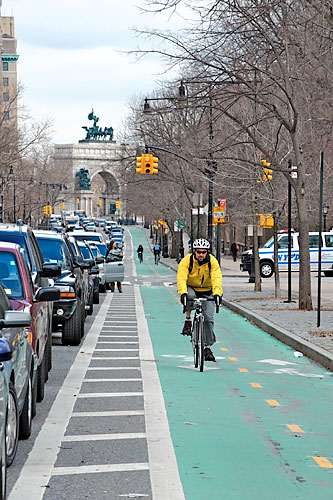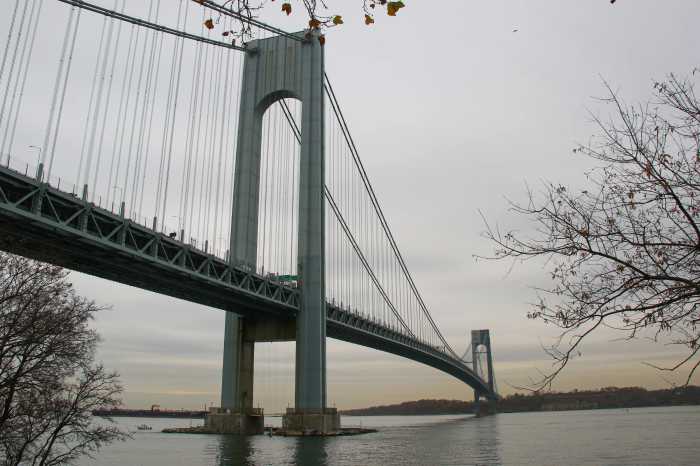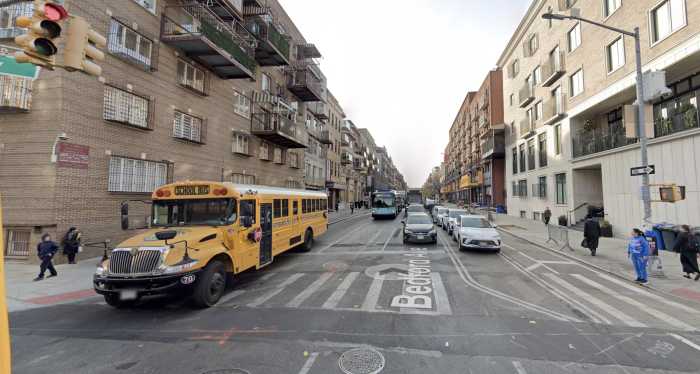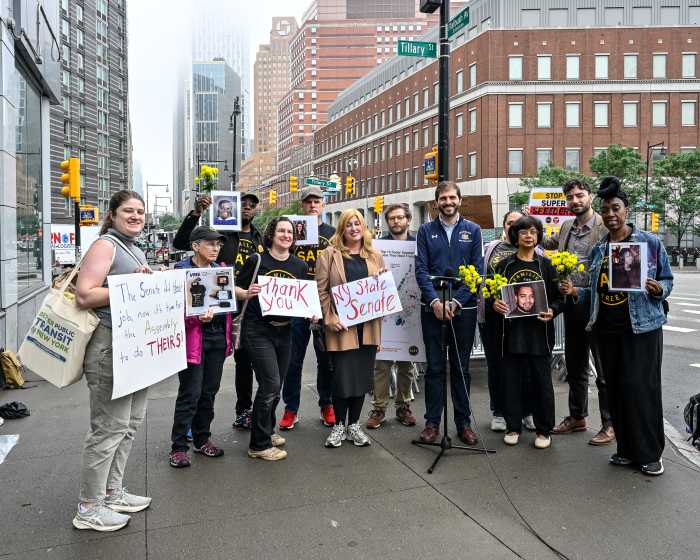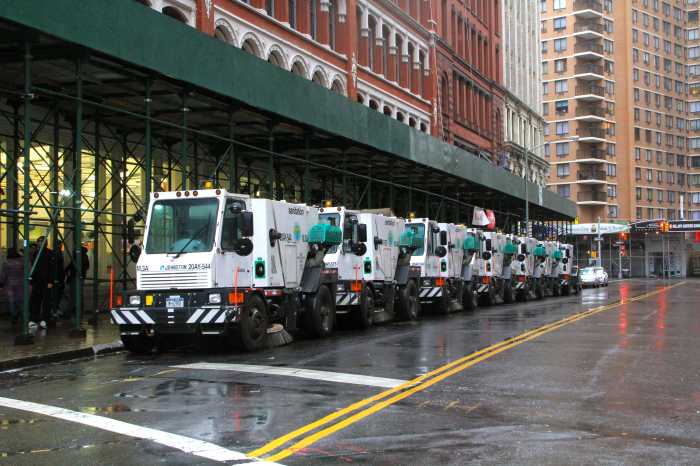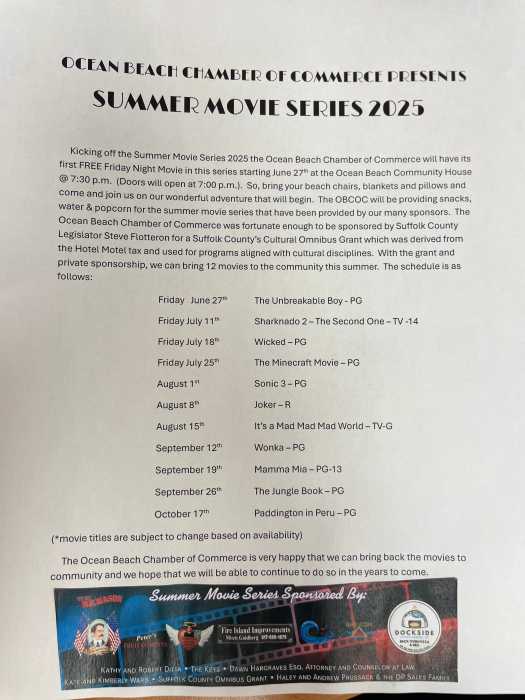Park Slope’s assemblyman has tossed aside the results of his own survey to conclude that the controversial two-way bike lane on Prospect Park West must be eliminated in favor of a standard one-way lane.
Assemblyman Jim Brennan (D–Park Slope) quietly released a survey late last Friday that revealed that a majority of Park Slopers favor the bike lane — yet in the same announcement, Brennan came out against the two-way protected route.
“I would prefer that the city continue to study the elimination of the two-way lane or [moving] the bike lane to the righthand side of Prospect Park West [as] an ordinary bike lane,” he said. “That would enable the reduction of three travel lanes to two to continue, but lessen concerns about safety from the unusual bike lane with a parking lane separated from the curbside.”
Brennan’s sudden objection to the Prospect Park West cycle path — which was installed in July and has been hailed as a success in both reducing speeding and increasing safety for cyclists — came despite the results of a study that his office commissioned last month.
Forty-four percent of residents in Brennan’s random phone survey said they favor keeping the two-way cycle path on Prospect Park West exactly the way it is, while 25 percent favor keeping the bike lane, but “altering it” slightly.
Just 28 percent want the lane removed entirely, according to the poll, which was compiled from phone interviews on March 27 and 28 with 500 Park Slope and Windsor Terrace residents.
It is unclear what alterations would appease the 25 percent that favor some changes. Currently, the city is moving ahead with “rumble strips” to warn cyclists of upcoming intersections, and raised pedestrian islands to improve safety.
As such, the Department of Transportation said it was surprised by Brennan’s call for bigger changes.
“Time and again, the community has affirmed its support for this project, and this poll shows that by nearly 3 to 1, residents near Prospect Park West want to keep or improve it,” said agency spokesman Seth Solomonow. “We continue to work with a very supportive community that wants to make this project even better and has proposed adding pedestrian islands and rumble strips for cyclists.”
Solomonow added that speeding and bicycling on the sidewalk “are down dramatically” and that car traffic on Prospect Park West “stayed the same or even improved.”
But in an interview with The Brooklyn Paper, Brennan accused the agency of twisting data.
“I am concerned that the city has been misleading the public on accident data,” he said. “The state Department of Motor Vehicles said there were 38 accidents on Prospect Park West from 2007-9. But over the same period, the city said there were 89 ‘crashes.’ I think that 89 number is being used to mislead the public.”
Solomonow said that the higher statistic comes from the NYPD and represents “all crashes to which police responded, regardless of severity” as opposed to state data, which “includes only those crashes that involve injuries or property damage exceeding $1,000.”
Since its installation in July, the two-way lane has been an ever-burning bush of controversy. Drivers have complained that the removal of one lane of car traffic has made for unhappy motoring, while some pedestrians say they feel less safe crossing a one-way street only to encounter a row of parked cars and then a two-way bike lane.
Cyclists have been pleased with the lane.
The other findings in Brennan’s survey — reflect the many opinions on the matter. For example:
•62 percent of people who bike regularly want to keep the lane as it is, while 32 percent of non-bicyclists and 27 percent of non-bike-owning drivers have the same opinion.
• 48 percent of respondents said the lane was a change for the better, while 32 percent said it was a change for the worse.
• Younger people like the bike lane more. Fifty-nine percent of people under 50 support the lane while only 36 percent of people over 50 support it. Younger residents also favor keeping the bike lane as is, while 25 percent of older residents are in favor of changing it and 39 percent want to get rid of it entirely.
• Half of survey respondents feel that the bike lane has reduced speeding on Prospect Park West, but a plurality of residents — 44 percent — feel that traffic flow is worse, and more than half of drivers — 54 percent — think traffic flow is worse.
• 33 percent of all respondents feel less safe crossing Prospect Park West, while 22 percent feel safer.
An opposition group joined Brennan in focussing on that part of the study — pedestrian safety.
“Pedestrians feel less safe crossing Prospect Park West, as this poll decisively shows,” said Jim Walden, attorney for Neighbors for Better Bike Lanes and Seniors for Safety, which is the city to force the removal of the lane. “And people feel less safe because they are less safe.”
City statistics show that there have been no injuries to pedestrians or cyclists since the lane was installed, down from an average of one injury every two months.
As such, bike lane supporters drove right over Brennan’s argument.
“The results of his own survey do not support that position,” said Eric McClure of Park Slope Neighbors. “The lane has resulted in improvements in safety and the reduction in speeding and injuries.”
And, McClure added, a one-way, southbound-only route would leave northbound cyclists back where they started from — once again increasing the likelihood of bicycling on the sidewalk.
Brennan’s central result — that 69 percent of residents support the bike lane, with or without changes — is similar to a study published last year by Councilman Brad Lander (D–Park Slope), whose survey of 3,000 people found that 78 percent of residents wanted the lane to remain, with or without changes.
“I am pleased to see how closely the results of Assemblyman Brennan’s poll mirror the survey that my office conducted in October,” Lander said. “The results show that the community generally supports the Prospect Park West traffic-calming project and bike lane.”
Complete survey results will be posted on Assemblyman Brennan’s website at www.assembly.state.ny.us/mem/James-F-Brennan.


